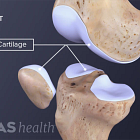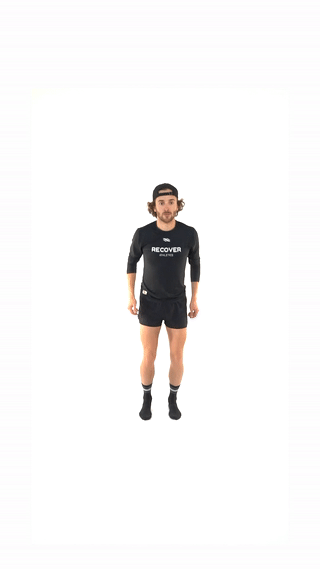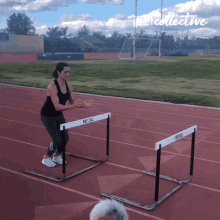Hey team,
A quick update, apologies this didn’t come out last week. I came down with the flu and wasn’t able to do much.
Moving on, this week is the last week of Exercise Essentials.
I was in 2 minds about this edition. Part of me wanted to remove it from the series because some of the lifts I’ll show you are fairly complex and require a coach present. But the other part of me thought it would be fun to keep in as a special edition.
So here we are, Exercise Essentials: Week 8 Jumps and Olympic Lifts.
The Fun Stuff
Jumps
More people should jump.
They are easy to do, require minimal equipment, there are countless variations and they are fun.
They aren’t a movement type that is just limited to athletes. Just because you’re getting older doesn’t mean that you can’t keep jumping. In fact, I would argue that people that continue to jump across their lifespan would be healthier than a person who doesn’t.
The main reasons strength and conditioning coaches program jumping (or plyometrics) is because they are a great way to improve muscular power, tendon stiffness/reactivity, and rate of force development. These adaptations help to improve sporting performance.
For those same reasons, it’s my view that pretty much everyone should be jumping. From a healthy aging perspective, maintaining those attributes of stiff tendons and powerful muscles later into your life, mean that you can stay active, independent and enjoying life for longer.
The other added benefit, especially for women, is that jumping is a potent stimulus for osteogenesis. Meaning, jumping helps to improve and maintain your bone mineral density.
As for incorporating them into your exercise routine, that’s easy. Put them at the start just after you’ve done a good warm up, that way you will get the most out of them.
Olympic Lifts
These are probably the opposite end of the spectrum from jumps. They are highly technical and require hands on coaching just to learn them, let alone perfect them.
That said, if you have the capacity, it’s worth having a go at them.
I could tell you again about the benefits of Olympic Lifts, but they are similar to that of jumps.
The reason I think that seasoned gym goers should do them is that they are a break from the norm. If you’ve lifted for 5-8+ years, chances are that you’re strong and you’ve done that many squats you could do them asleep.
Olympic Lifts offer a break from the monotony and give you a new challenge to try master. And trust me, they take a long time to master. But it’s that reason that I personally find them so enjoyable. There’s always a little piece or phase of the lift that can be improved. It kinda follows this flow:
You film a video of you doing an Olympic Lift, you/your coach points out an error to fix, you fix the error, happy.exe, you film a video of the lift and see another error, and so the cycle repeats.
Touching Base:
ICYMI: Has someone told you that deep squats are bad for you, cause they aren’t:
High Quality Creatine: Hitting a plateau in your training, creatine will help you break through. Check out Wonder Foods Australia to get your tub today.
Upgrade to Paid: Not sure what or who to trust for health advice on the internet, we’ve got you covered.
Variations to Try
Jumps:
Pogo Hops:
I like using these as a reintroduction to jumping for the populations I work with (chronic pain and menopausal women). They are what we call “low-amplitude”, meaning you aren’t putting much force into the ground or jumping very high. The risk of injury is essentially zero, which is why I find it to be a great starting point before building into more intense jumps.
Hurdle Jumps:
These are a fairly intense type of jump and because of that I don’t prescribe them to everyone. Once again though, it comes back to that point of healthy aging, if you are able to do this type of jump in your 50s and through to your 70s/80s, I’d say you’re doing well for yourself.
Olympic Lifts:
Hang Clean Pull:
This is a go-to lift for pretty much every strength and conditioning coach when introducing someone to Olympic lifting. It takes a position that most people know (RDL), adjusts the bar starting point to be just above the knees, and makes it a ballistic movement.
Hang Power Snatch:
Snatches are a funny one. Most people probably avoid them because the movement is basically you trying to get a barbell from the ground to over your head in one fluid motion. In reality, if you can strict press and rdl, you can snatch, the movement is actually fairly simple.
The hardest part for most people is getting used to the wide hand position on the bar, just because up until that point, it is unlikely that they’ve held the bar like that.
That is it!
Thank you for reading the final edition of Exercise Essentials.
I hope you picked up something new, whether it was a new exercise variation or a better understanding of what muscles you use on different movements.
Stay tuned for what comes next!
Chat soon,
Jono




